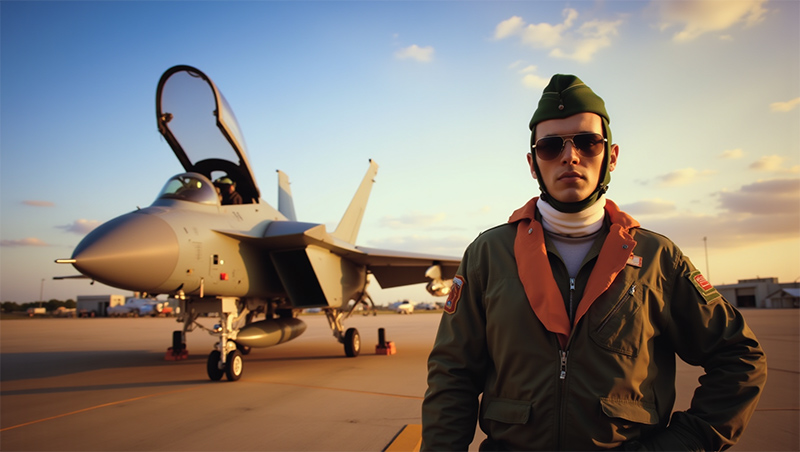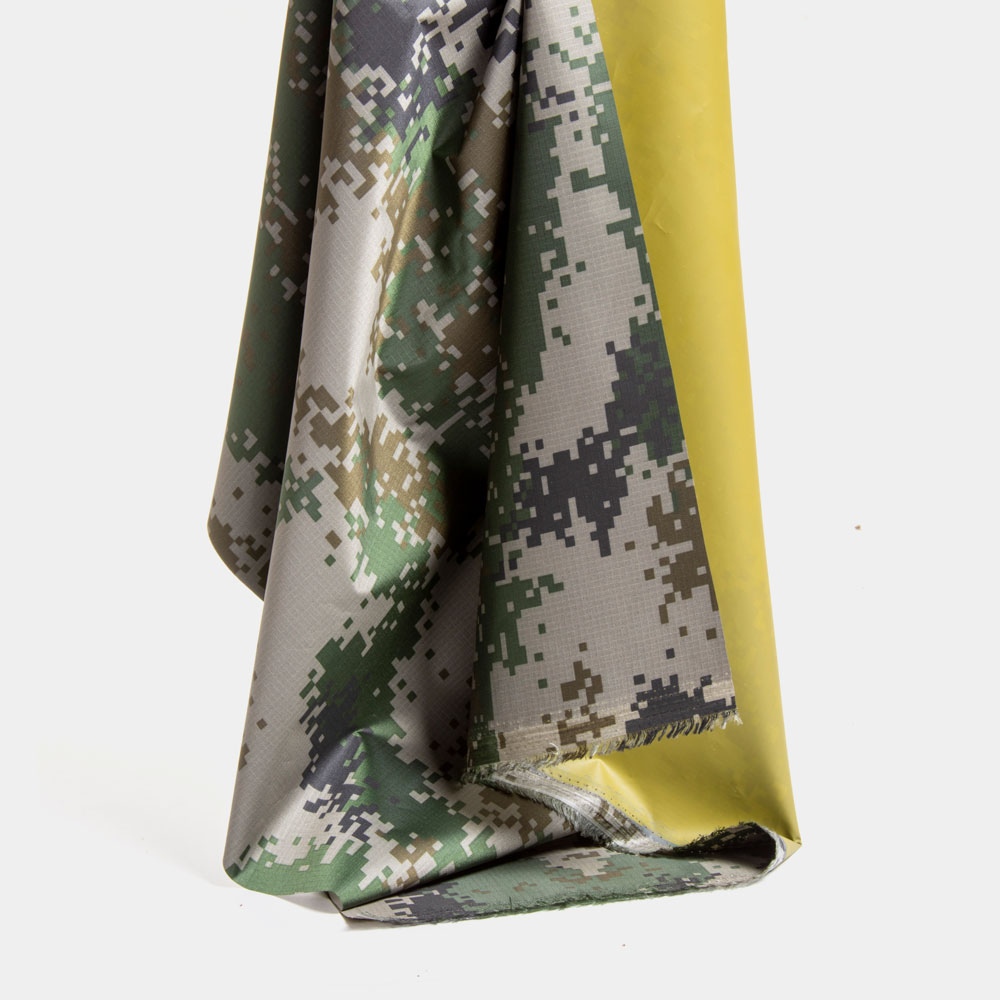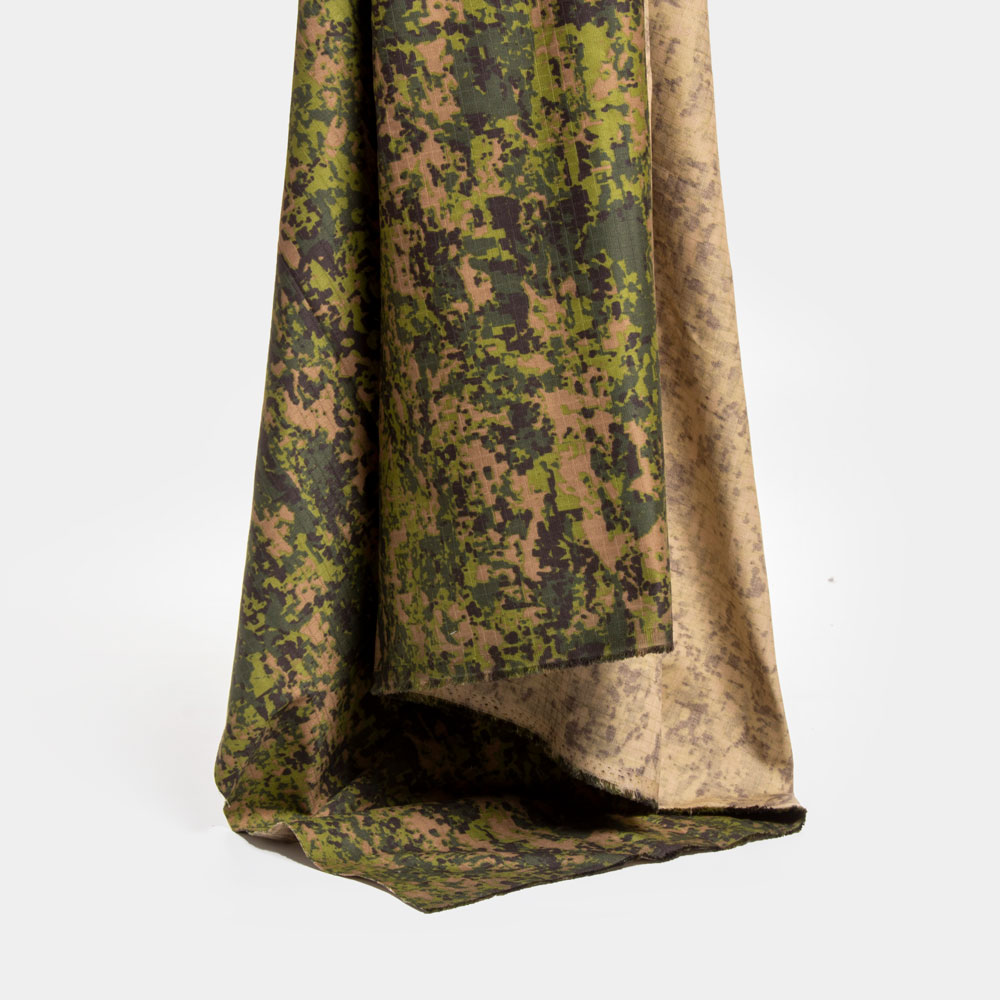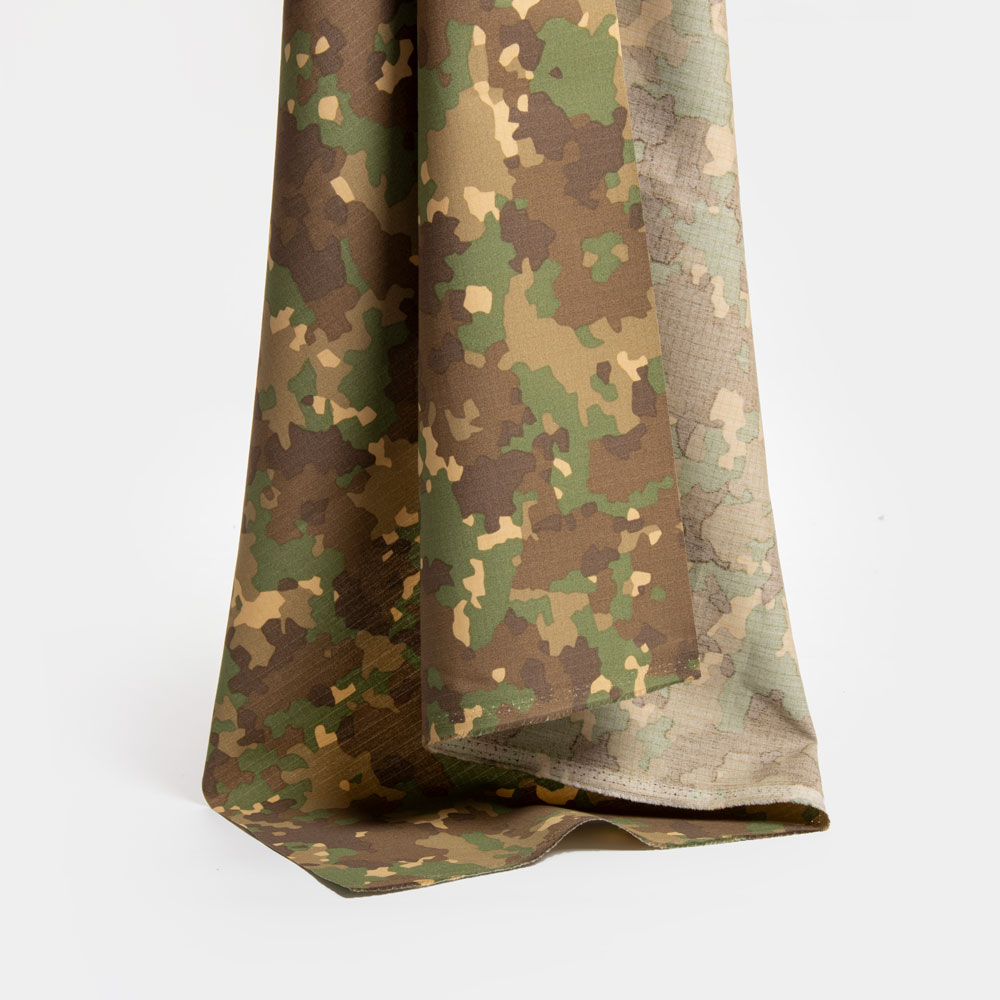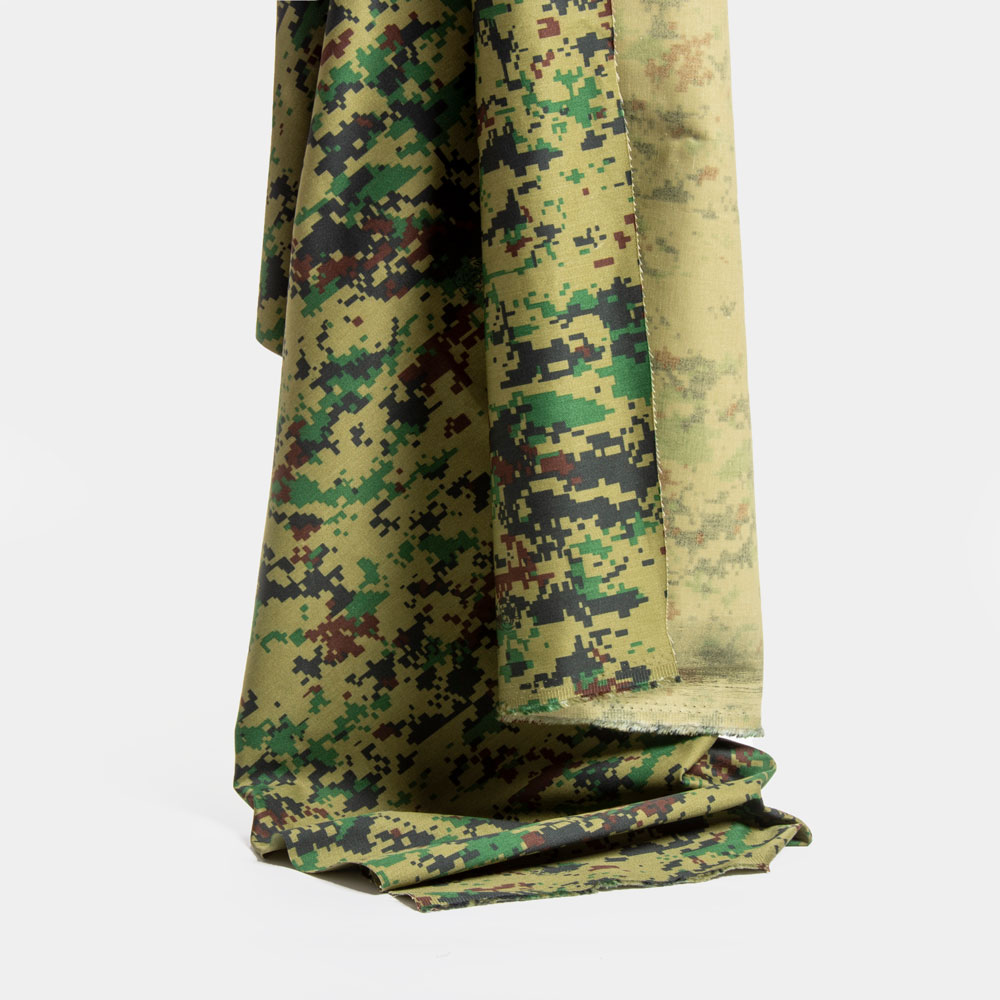Understanding Military Flame-Resistant Fabric
This article focuses on the military uniform fabrics used by the armed forces, exploring their historical evolution, material characteristics, critical requirements, and future development trends. It delves into the science and technology behind military uniform fabrics, highlighting their vital role in ensuring national security and protecting soldiers’ lives.
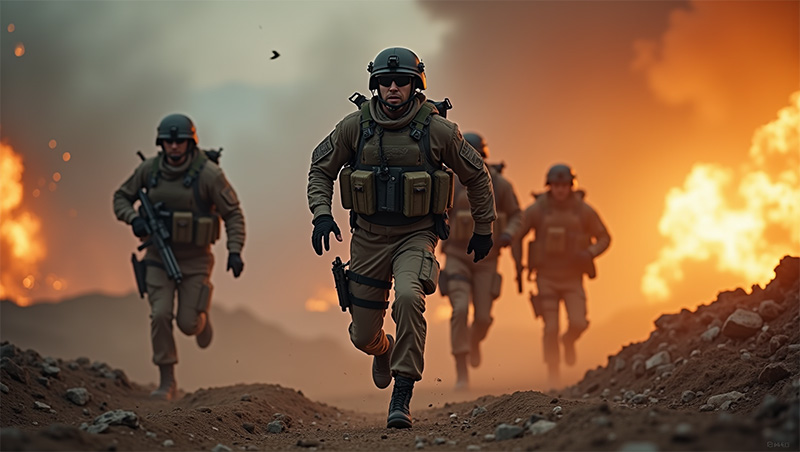
Introduction
From the battlefield to the barracks, military uniforms are an indispensable part of soldiers’ lives. These garments not only feature a unique appearance but are also meticulously designed to provide comfort, protection, and functionality in the most challenging environments. Among these features, flame resistance is particularly crucial, especially for specific military branches and combat environments. Military uniform fabrics are far more complex than they may appear, typically consisting of blends of synthetic and natural fibers treated for flame resistance. Cotton-polyester blends are the most common, with specific compositions varying according to the specific requirements of different military branches and roles. This article explores the evolution of uniform materials from traditional cotton to advanced synthetic blends, examining the specific requirements such as flame resistance, durability, and breathability, and how various fabrics meet these needs. Additionally, it discusses differences in fabric selection across different military branches and uniform types (e.g., combat uniforms and dress uniforms). Whether you’re a military enthusiast, textile professional, or simply curious about what the armed forces wear, this article provides a comprehensive look at the materials, weaves, and flame-resistant technologies that protect those who protect us.
1. The Evolution of Military Uniform Fabrics
1.1 Historical Perspective: From Natural Fibers to Synthetic Blends
The development of military uniform fabrics is a fascinating story spanning centuries. Military uniforms have evolved from coarse wool and stiff cotton to today’s high-tech synthetic blends. In the early days, natural fibers like wool, cotton, and linen were the primary choices for uniforms. These materials were readily available and provided protection against natural elements, but they also had significant drawbacks. Wool was itchy and heavy, cotton became soaked when wet, and linen wrinkled quickly. Over time, the military began exploring synthetic fibers. The revolutionary introduction of nylon in the 1930s made uniforms lighter, more durable, and quicker to dry. By the 1960s, polyester was introduced, offering wrinkle resistance and easy maintenance. Blending natural and synthetic fibers combined the best of both worlds, becoming the new standard. Today’s military uniforms often incorporate blends of cotton, nylon, and other advanced synthetic materials, offering a level of comfort, durability, and functionality that previous generations could only dream of.
1.2 Key Milestones in Uniform Fabric Development
A quick review of key milestones in the development of military uniform fabrics:
- 1940s: Introduction of ripstop fabrics to reduce tearing and enhance durability.
- 1950s: Development of waterproof and breathable fabrics.
- 1980s: Emergence of moisture-wicking textiles, making uniforms cooler and drier.
- Early 21st Century: Integration of flame-resistant fabric for enhanced protection.
One of the most significant advancements in the early 21st century was the introduction of near-infrared (NIR) technology. This innovation enabled the production of fabrics that rendered soldiers nearly invisible to night vision equipment, akin to a high-tech game of hide and seek. According to the U.S. Army Natick Soldier Systems Center, these technological advancements have significantly improved soldiers’ survivability and effectiveness on the battlefield.
1.3 Impact of Technological Advances on Uniform Materials
The impact of technology on military uniforms is astounding. Modern uniforms now incorporate advanced camouflage patterns, durable stitching, and cutting-edge features such as fabrics with embedded sensors to monitor soldiers’ vital signs, materials that change color to adapt to different environments, and textiles that harvest energy from solar power or the wearer’s movements. This is akin to a personal Iron Man suit—minus the flight capabilities (for now). According to a research firm, the global military personal protective equipment market was valued at $15.12 billion in 2020 and is expected to grow at a compound annual growth rate of 5.4% from 2021 to 2028. This growth is largely driven by advancements in fabric technology. Looking ahead, military uniform fabrics may include self-healing materials, uniforms that adapt to extreme temperatures, and other incredible innovations. One thing is certain: the military will continue to benefit from the relentless progress of fabric technology.
2. Common Fabrics Used in Modern Military Uniforms
The choice of uniform fabric is critical for protecting soldiers. Below, we explore the materials that keep soldiers safe and comfortable in various conditions.
2.1 Cotton-Polyester Blends: The Backbone of Military Uniforms
Cotton-polyester blends have long been a staple in military uniforms. These fabrics strike the perfect balance between comfort, durability, and functionality, combining cotton’s natural breathability with polyester’s strength and quick-drying properties. According to a study by the U.S. Army Natick Soldier Research, Development, and Engineering Center, a 50/50 cotton-polyester blend is optimal for most military applications, enhancing moisture-wicking capability and reducing wrinkles. Many military uniforms feature the iconic olive-green color because it is one of the hardest colors for the human eye to detect from a distance, aiding in camouflage.
2.2 Nylon and Its Role in Military Gear
Nylon is a tough and versatile synthetic fiber that plays a critical role in military gear. With its excellent strength-to-weight ratio, it is commonly used in backpacks, load-bearing vests, and parachutes. According to the U.S. Defense Logistics Agency, nylon is a key component in various military items, from bootlaces to tactical vests. Nylon’s waterproof and quick-drying characteristics make it ideal for wet-weather missions, ensuring that uniforms remain functional and presentable.
2.3 Aramid Fibers: Enhanced Protection and Durability
When it comes to protective functionality, aramid fibers are high-performance materials with exceptional heat resistant flame retardant, and ballistic protection. According to the National Institute of Standards and Technology, aramid fibers can withstand temperatures of up to 932°F (500°C) without degrading.
2.4 Specialized Fabrics for Extreme Conditions
Modern warfare demands adaptability, which is where specialized fabrics come into play. For extreme cold, waterproof and breathable membranes are essential. These fabrics keep soldiers dry and comfortable in Arctic tundras and rainforests alike. In contrast, for scorching desert conditions, fabrics like those from Begoodtex® help regulate body temperature and wick away sweat. The U.S. Marine Corps has even developed a special desert uniform using lightweight, breathable ripstop fabric to keep troops cool in temperatures exceeding 120°F (49°C).
| Fabric Type | Key Benefits | Common Applications |
| Cotton-Polyester Blend | Comfort, durability, moisture-wicking | Standard uniforms, combat shirts |
| Nylon | High strength, waterproof | Backpacks, vests, parachutes |
| Aramid Fibers | Heat resistance, flame retardance | Body armor, flame-resistant gear |
With advancements in technology, fabrics used to protect soldiers continue to evolve. From the reliable cotton-polyester blend to the bulletproof aramid fibers, these materials are the unsung heroes behind military uniforms. The science and innovation behind these fabrics ensure that soldiers are well-equipped to face any challenge.
3. Key Requirements for Military Uniform Fabrics
Not just any fabric can be chosen for military gear. Military uniform fabrics must meet a stringent set of requirements to ensure optimal performance on the battlefield. Below, we explore the key factors that make these fabrics exceptional choices:
3.1 Durability and Longevity
Military uniforms must withstand extreme conditions and rigorous use, making durability a top priority. These fabrics are designed to resist tearing, abrasion, and wear that would quickly damage civilian textiles. According to the U.S. Army Natick Soldier Systems Center, modern military fabrics have abrasion resistance up to 200% higher than standard civilian textiles. High-strength fibers like nylon and polyester blends ensure uniforms can endure the demands of combat and training without failing.
3.2 Comfort and Breathability
No one wants to fight in uncomfortable clothing. Fabric comfort and breathability are essential for maintaining soldiers’ morale and performance in all climates. Military uniform fabrics must allow sufficient airflow and wick moisture to keep soldiers cool and dry. Some uniforms incorporate advanced materials like phase-change fabrics that absorb or release heat as needed. For instance, the U.S. Marine Corps developed a tropical uniform using quick-drying, lightweight materials designed for hot and humid environments.
3.3 Camouflage and Concealment
Effective camouflage patterns and materials are critical for remaining undetected in various terrains. Modern military fabrics use advanced printing techniques and special dyes to help soldiers blend into their surroundings. The U.S. Army’s Operational Camouflage Pattern (OCP), introduced in 2015, exemplifies the synergy between fabric technology and design to enhance concealment. Some cutting-edge fabrics even incorporate infrared-reflective properties to reduce visibility under night vision devices.
3.4 Fire and Thermal Protection
Battle zones can become extremely hot, with factors extending beyond just the weather. Flame-retardant fabrics are essential in protecting soldiers from burns and thermal injuries. In certain combat scenarios, using flame-retardant uniforms like Begoodtex can reduce burn injuries by more than 50%.
3.5 Resistance to Chemical and Biological Agents
Finally, the military must also guard against invisible threats. Military uniform fabrics must resist chemical and biological agents that may be encountered during warfare or terrorist attacks. Special coatings and treatment processes applied to fabrics can repel or neutralize harmful substances. Some advanced fabrics even incorporate activated carbon or other adsorptive materials to capture dangerous particles. A notable example of progress in this field is the U.S. military’s Joint Service Lightweight Integrated Suit Technology (JSLIST), which provides up to 24 hours of chemical and biological protection.
4. Differences in Fabric Choices Across Military Branches
When it comes to military uniforms, one size definitely does not fit all. Each branch of the armed forces has unique requirements and challenges, leading to fascinating variations in fabric choices. Below, we’ll explore the world of military textiles and examine how the Army, Navy, Air Force, and Marine Corps equip their personnel.
4.1 Army Uniform Fabrics
Known for their versatility and adaptability, the U.S. Army requires uniforms capable of withstanding a variety of environments. The Army Combat Uniform (ACU) primarily uses a 50/50 cotton-nylon blend, offering a balance between comfort and durability.
4.2 Navy Uniform Fabrics
Navy uniform fabrics are designed to endure the unique challenges of life at sea. The Navy Working Uniform (NWU) Type III for onshore operations is made of a 50/50 nylon-cotton blend, similar to the Army’s ACU. However, for shipboard work, the Navy opts for a blend of flame-retardant nylon, cotton, and flame-retardant rayon.
Additionally, the Navy’s iconic blue dress uniforms and white dress uniforms are made from 100% wool and polyester, respectively, offering a distinguished appearance while maintaining a neat look in humid conditions.
4.3 Air Force Uniform Fabrics
Known for its high standards, the Air Force has its own unique fabric choices. The Airman Battle Uniform (ABU) is made from a 50/50 nylon-cotton ripstop fabric, offering durability and comfort to both ground and air personnel. Interestingly, the Air Force has been transitioning to the Operational Camouflage Pattern (OCP) uniform, which uses a flame-retardant blend of viscose, para-aramid, nylon, and meta-aramid fibers.
The Air Force flight suits, with outstanding flame-retardant properties, are vital for pilot safety, acting as a protective cocoon in the skies.
4.4 Marine Corps Uniform Fabrics
The Marine Corps takes pride in standing out, and this extends to their fabric choices. The Marine Corps Combat Utility Uniform (MCCUU) uses a 50/50 cotton-nylon ripstop fabric, similar to other branches, but with a unique MARPAT (Marine Pattern) camouflage print. This fabric strikes a balance between durability, comfort, and fire resistance.
The Marine Corps’ blue dress uniform, perhaps the most recognizable military uniform, is made from 100% wool. This traditional fabric choice dates back to the Corps’ founding, symbolizing its connection to a legendary history.
As seen, each military branch carefully selects fabrics tailored to its specific needs, balancing durability, comfort, safety, and tradition. From high-tech flame-retardant materials to historically significant wool, these fabric choices play a crucial role in protecting and identifying service members.
5. Specialized Uniforms and Their Unique Fabric Requirements
The military faces diverse roles and environments, necessitating specialized uniforms with unique fabric requirements. Below, we delve into how these uniforms are designed to protect and serve the brave men and women who wear them.
5.1 Combat Uniforms
Combat uniforms are the workhorses of military apparel, designed to withstand the harsh conditions of the battlefield while providing camouflage and protection. These uniforms are typically made from blends of cotton and synthetic fibers like nylon or polyester to balance comfort, durability, and moisture-wicking properties.
For instance, the U.S. Army’s Operational Camouflage Pattern (OCP) uniform is made from a 50/50 cotton-nylon blend, offering a perfect combination of breathability and strength.
Modern combat uniforms often feature flame-retardant (FR) treatments. In explosive environments, this critical feature can mean the difference between life and death. The U.S. Marine Corps’ Enhanced Flame Resistant Combat Ensemble (EFRCE) goes a step further by using inherently flame-retardant fibers like meta-aramid and para-aramid, offering superior protection without compromising comfort.
5.2 Dress Uniforms
Dress uniforms represent a blend of military pride and tradition. While not intended for the battlefield, they have unique fabric requirements for formal occasions and ceremonies, prioritizing appearance, comfort, and durability.
These uniforms are typically made from high-quality natural fibers like wool or cotton, sometimes blended with synthetic fibers for wrinkle resistance and easy care.
For example, the iconic U.S. Marine Corps blue dress uniform is made from 100% wool, renowned for its excellent drape and ability to maintain sharp creases. The U.S. Navy’s white dress uniform uses a polyester-cotton blend, presenting a crisp, clean look that is relatively easy to maintain—perfect for long days at sea.
5.3 Flight Suits
When it comes to flying at high altitudes, pilots require specialized gear to ensure their safety and comfort. Flight suits are designed to protect pilots from potential hazards while providing functionality in the cockpit. These one-piece garments are often made from flame-retardant materials.
The U.S. Air Force’s latest flight suits (Airman Battle Uniforms, ABU) go a step further, offering flame resistance, insect repellency, and multiple pockets and attachment points for essential gear.
5.4 Cold-Weather Gear
When temperatures drop, troops need effective protection against the elements. Cold-weather military gear relies on advanced fabric technology to provide insulation, moisture resistance, and windproofing. These uniforms often use a layering system, with each layer serving a specific purpose.
The U.S. Army’s Extended Cold Weather Clothing System (ECWCS) exemplifies this approach, comprising seven layers ranging from moisture-wicking base layers to windproof outer layers.
6. The Future of Military Uniform Fabrics
6.1 Smart Textiles and Wearable Technology
Smart textiles and wearable technology are revolutionizing how troops are protected and equipped. These innovative fabrics can monitor vital signs, regulate body temperature, and even provide real-time data to commanders. Uniforms capable of detecting dehydration or heat stress are no longer confined to science fiction.
6.2 Applications of Nanotechnology in Fabric Development
Nanotechnology is bringing military fabrics to the microscopic level. By manipulating materials at the atomic and molecular scale, scientists are creating fabrics with superhero-like properties—uniforms that can resist chemical and biological agents, self-clean, or even repair small tears, akin to having a miniature army of fabric repair workers operating around the clock.
The U.S. Army Research Laboratory has been studying nanotechnology-enhanced fabrics capable of generating electricity from the wearer’s movements.
6.3 Sustainable and Eco-Friendly Military Fabrics
Who says wearing camouflage can’t be eco-friendly? Military attire is also moving toward sustainability, with eco-friendly fabrics leading the charge. Researchers are developing biodegradable uniforms made from renewable resources, offering a win-win solution for both military applications and environmental protection.
The U.S. Department of Defense has set long-term goals to reduce the environmental impact of military attire. As part of this initiative, they are exploring fabrics made from recycled materials and even uniforms that can be composted at the end of their life cycle—a concept known as “uniform retirement.”
6.4 Adaptive Camouflage and Color-Changing Materials
Adaptive camouflage and color-changing materials could render troops nearly invisible, altering their color and pattern to blend seamlessly with any environment, from desert sands to urban landscapes. This is akin to giving soldiers chameleon-like superpowers but on a much cooler scale!
Scientists at the University of California, Irvine, have developed a material that changes color when stretched or relaxed. Although still in its early stages, its potential for military applications is astounding. Imagine a uniform that automatically adjusts its camouflage as soldiers traverse different terrains—that’s what we call fashion meeting function!
As we look to the future of military uniform fabrics, one thing is certain—our troops’ attire will be safer, more comfortable, and more effective than ever before. With the advent of smart textiles, nanotechnology, eco-friendly materials, and adaptive camouflage, the next generation of military fabrics is poised for revolutionary change. Perhaps one day, uniforms will teleport soldiers or make them completely invisible—at the current pace of technological advancement, anything is possible!
7. Conclusion
As explored in this comprehensive review, the fabrics used in military uniforms are far more complex and technologically advanced than many people realize. From traditional cotton-polyester blends to cutting-edge smart textiles, the evolution of military fabrics reflects both advancements in textile technology and the changing nature of warfare and military operations.
Choosing the right fabric for military uniforms is a critical decision that must balance durability, comfort, protection, and functionality. Each military branch has specific requirements, leading to differences in fabric choices across uniforms and roles.
Ongoing research and development in this field promise to bring even more innovative solutions in the future, such as adaptive camouflage and integrated wearable technology.

